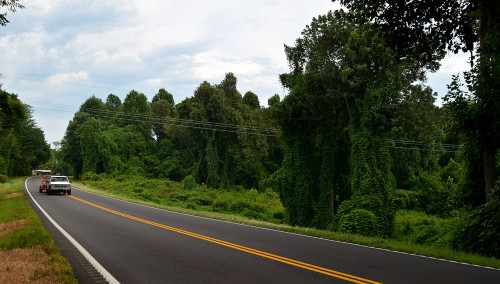 Just east of Wickliffe on 121, there’s a stretch of road about a mile long that has always felt spooky to me. In the summertime, all of the trees on either side of the road are covered in Kudzu.
Just east of Wickliffe on 121, there’s a stretch of road about a mile long that has always felt spooky to me. In the summertime, all of the trees on either side of the road are covered in Kudzu.
The green photos were taken July 25, 2014.
I’m keeping my distance
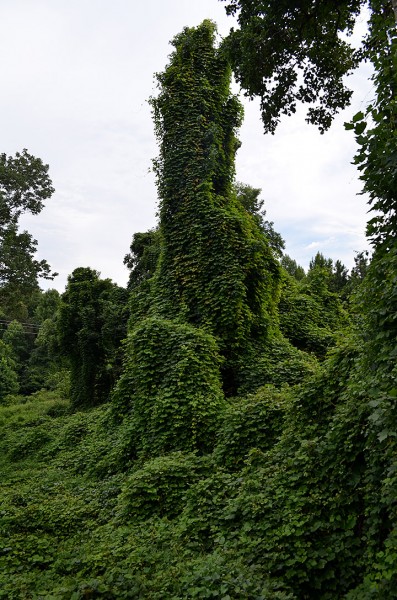 When I pulled of to take these photos, I kept my distance. It felt like if you got too close, the vines would reach out and drag you into the greenery like a spider pulling a fly into its web.
When I pulled of to take these photos, I kept my distance. It felt like if you got too close, the vines would reach out and drag you into the greenery like a spider pulling a fly into its web.
Kudzu doesn’t like cold
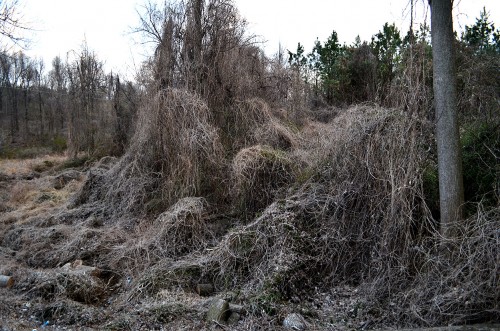 If you drive through there after a freeze, though, it’s a different story.
If you drive through there after a freeze, though, it’s a different story.
The brown photos were taken April 1, 2014.
Introduced in 1876
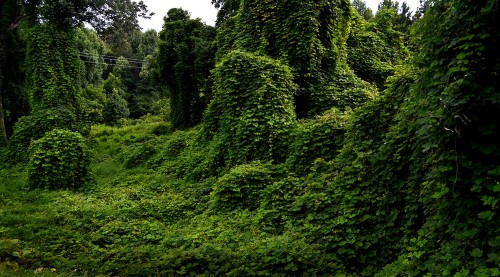 Kudzu was introduced to the United States in 1876 at the Centennial Exposition in Philadelphia, The Amazing Story of Kudzu website says. The Japanese built a beautiful garden filled with plants from their country. The large leaves and sweet-smelling blossoms captured in imagination of American gardeners who used it for ornamental purposes.
Kudzu was introduced to the United States in 1876 at the Centennial Exposition in Philadelphia, The Amazing Story of Kudzu website says. The Japanese built a beautiful garden filled with plants from their country. The large leaves and sweet-smelling blossoms captured in imagination of American gardeners who used it for ornamental purposes.
Too much of a good thing
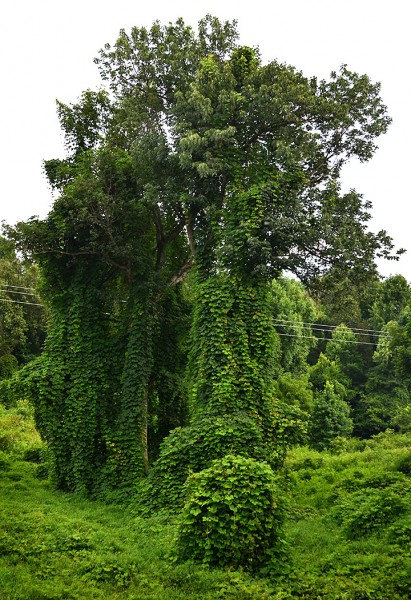 The Soil Conservation Service promoted Kudzu for erosion control in the 1930s, and farmers were paid as much as eight dollars an acre to plant the vines in the 1940s.
The Soil Conservation Service promoted Kudzu for erosion control in the 1930s, and farmers were paid as much as eight dollars an acre to plant the vines in the 1940s.
The problem was that Kudzu grows TOO well: as much as a foot a day during summer months, and up to sixty feet a year. The U.S. stopped advocating the use of the plant in 1953 because it would overwhelm everything in its path – trees, utility poles, fences, crops and slow-moving cattle. (OK, I made that last one up.)
Lots of uses
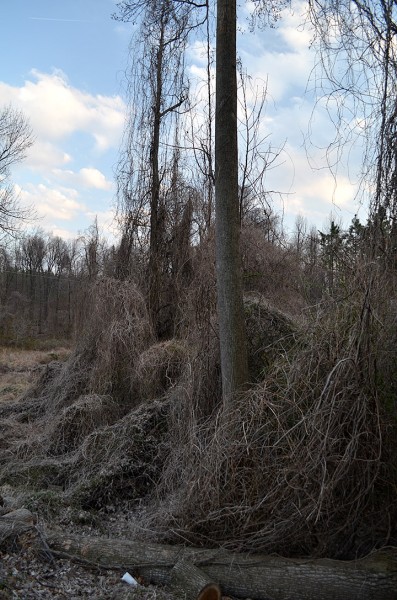 The Kudzu website lists a variety of uses for the prolific plant, but I know what I’d do with it if I ever had an annoying neighbor. I’d plant a stand of Kudzu on the property line, point to the neighbor’s house and say, “Sic ’em.” With luck, the plant would cover the house in no time. You wouldn’t even want to think what would happen to the inhabitants (unless you have a really, dark, twisted mind).
The Kudzu website lists a variety of uses for the prolific plant, but I know what I’d do with it if I ever had an annoying neighbor. I’d plant a stand of Kudzu on the property line, point to the neighbor’s house and say, “Sic ’em.” With luck, the plant would cover the house in no time. You wouldn’t even want to think what would happen to the inhabitants (unless you have a really, dark, twisted mind).
Click on the photos to make them larger, but I’d stay at least a foot away from the monitor if you are a slow reader.

We have our own type of kudzu here in north Georgia. We planted a Chinese wisteria bush next to the upper driveway, and when we don’t keep it trimmed every week, it threatens to devour our car parked next to it. I caught it trying to open the trunk one day! It is a beautiful bush but oh so kudzu-y.
Kudzu originally from Japan. MCC lists it as “an intrusive plant” and seeds and plants are illegal in several counties in MO and IL and several states north. Another noxious plant from Japan…multi-flora rose…trying to be eliminated in US. (The war is not over)
Probably an excellent idea to keep your distance. You wouldn’t want to becoe the Jordy Verrill of Kentucky. Being green should have some limits,
It can be like looking at clouds. You see all kinds of shapes. There is some near us in some scrub trees and is kept in check by the wide creek on one side and the mown highway on the other. We planted a wisteria to climb over a pergola over our patio and climb it does. Electric shears, a ladder and persistence keep it in check. When anything gets out of hand, we have a separate “Roundup” account ready at the bank.
Kudzu grows in PA too. About ten years ago, my daughter had a plant in her yard that was very prolific. We were not familiar with it at first,but her neighbor said it was Kudzu. It was pretty at first until we saw how it was taking over and we were cutting it all the time. It was the plant that ate the yard!!! She got married and no longer lives there!!!
I remember a major kudzu planting on a particularly large hillside on the south side of Highway 61 between Cape and Jackson, after first being bisected by I-55. Erosion was, indeed, prevented, but it choked out everything else and had to be removed. I took it as nature’s punishment for ripping out the rose garden 🙂
Kudzu blooms? We’ve never seen that…